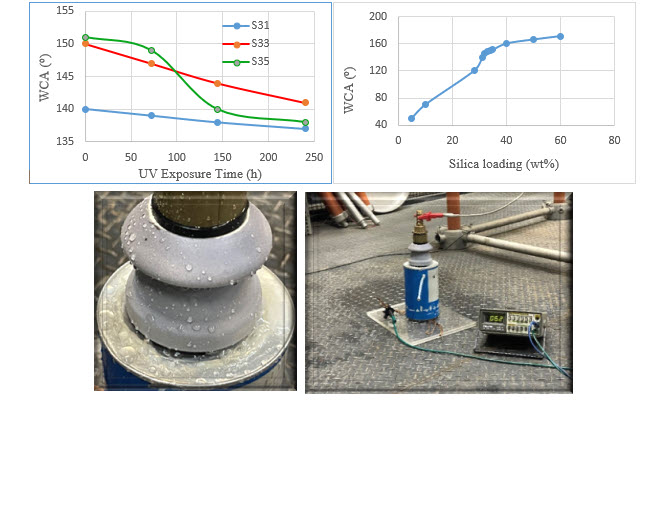Mon, Jan 6, 2025
[Archive]
Volume 21, Issue 3 (September 2024)
IJMSE 2024, 21(3): 1-14 |
Back to browse issues page
Download citation:
BibTeX | RIS | EndNote | Medlars | ProCite | Reference Manager | RefWorks
Send citation to:



BibTeX | RIS | EndNote | Medlars | ProCite | Reference Manager | RefWorks
Send citation to:
Dashti M, Baghshahi S, Sedghi A, Nourmohammadi H. Nano-Silica Coatings and Their Effect on the Hydrophobicity and Electrical Properties of Power Line Porcelain Insulators. IJMSE 2024; 21 (3) :1-14
URL: http://ijmse.iust.ac.ir/article-1-3558-en.html
URL: http://ijmse.iust.ac.ir/article-1-3558-en.html
Abstract: (4900 Views)
Abstract
The power line insulators are permanently exposed to various environmental pollutants such as dust and fine particles. This may lead to flashovers and therefore widespread power blackouts and heavy economic damage. One way to overcome this problem is to make the insulator surface superhydrophobic. In this research, the superhydrophobic properties of the insulators were improved by applying room-temperature cured composite coatings consisting of epoxy and hydrophobic nano-silica particles. Either octadecyl trichlorosilane (ODTS) or hexamethyldisilazane (HMDS) was used to coat the silica nanoparticles and make them hydrophobic. Then, the hydrophobic silica was added to a mixture of epoxy resin and hardener. The suspension was applied on the surfaces of a commercial porcelain insulator and cold cured at ambient temperature. The coating increased the water contact angle from 50° to 149°. Even after 244 h exposure to the UV light, the samples preserved their hydrophobic properties. The adhesion of the coating was rated as 4B according to the ASTM D3359 standard. The coating decreased the leakage current by 40% and increased the breakdown voltage by 86% compared to the uncoated sample and showed promise for making power line insulators self-cleaning.
The power line insulators are permanently exposed to various environmental pollutants such as dust and fine particles. This may lead to flashovers and therefore widespread power blackouts and heavy economic damage. One way to overcome this problem is to make the insulator surface superhydrophobic. In this research, the superhydrophobic properties of the insulators were improved by applying room-temperature cured composite coatings consisting of epoxy and hydrophobic nano-silica particles. Either octadecyl trichlorosilane (ODTS) or hexamethyldisilazane (HMDS) was used to coat the silica nanoparticles and make them hydrophobic. Then, the hydrophobic silica was added to a mixture of epoxy resin and hardener. The suspension was applied on the surfaces of a commercial porcelain insulator and cold cured at ambient temperature. The coating increased the water contact angle from 50° to 149°. Even after 244 h exposure to the UV light, the samples preserved their hydrophobic properties. The adhesion of the coating was rated as 4B according to the ASTM D3359 standard. The coating decreased the leakage current by 40% and increased the breakdown voltage by 86% compared to the uncoated sample and showed promise for making power line insulators self-cleaning.
Type of Study: Research Paper |
Subject:
Ceramics
Send email to the article author
| Rights and permissions | |
 |
This work is licensed under a Creative Commons Attribution-NonCommercial 4.0 International License. |







